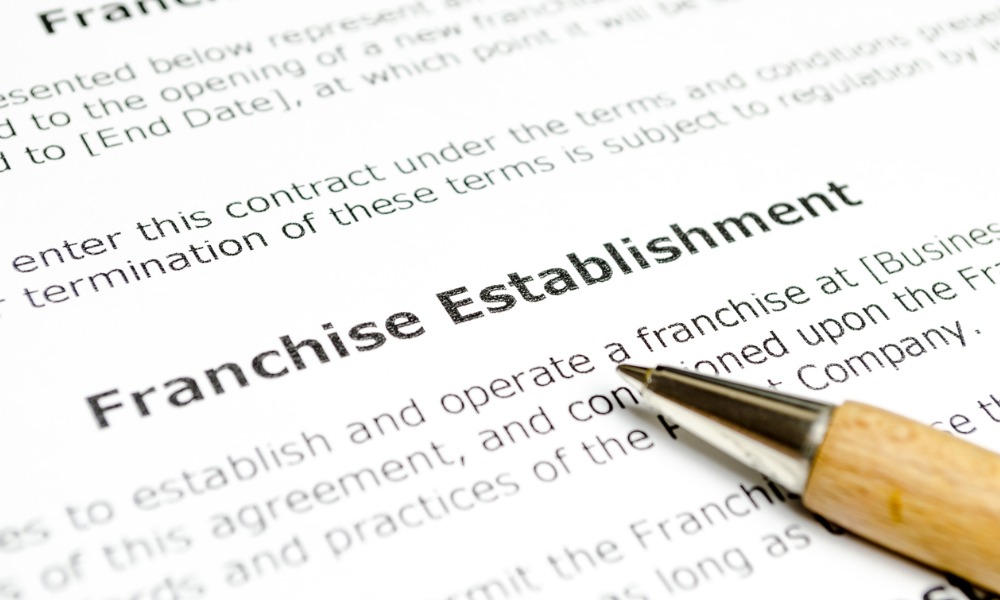A constructive dismissal occurs when an employer unilaterally makes a substantial change to the essential term of an employment contract, thereby giving an employee a right to treat the contract as being at an end and resign. In constructive dismissal actions, employees may not be able to recover damages if they fail to take reasonable steps to mitigate avoidable economic losses. This so-called duty to mitigate takes on many forms, ranging from an employee’s obligation to look for comparable employment to returning to work for the former employer during the period of working notice.
 In Farwell v. Citair Inc. (General Coach Canada), the Ontario Court of Appeal dealt with the latter scenario. It had to decide whether an employee is under an obligation to mitigate by returning to work for his employer when it made such an offer before and not after he asserted constructive dismissal. The court clarified this type of mitigation duty would only apply when an employer offers an employee an opportunity to work out the notice period after the worker has asserted constructive dismissal.
In Farwell v. Citair Inc. (General Coach Canada), the Ontario Court of Appeal dealt with the latter scenario. It had to decide whether an employee is under an obligation to mitigate by returning to work for his employer when it made such an offer before and not after he asserted constructive dismissal. The court clarified this type of mitigation duty would only apply when an employer offers an employee an opportunity to work out the notice period after the worker has asserted constructive dismissal.
In Farwell, Citair, as a result of a legitimate restructuring, decided to transfer its vice president of operations, Ken Farwell, into a purchasing manager role he had held years earlier. The restructuring was in response to economic considerations and not due to animus against Farwell. At the time, Farwell was 58 years old and had worked there for 38 years. The proposed reorganization of his role entailed a change in title to reflect his diminished role at the company that resulted in a significant loss of status. Farwell rejected the proposed change and asserted constructive dismissal.
At trial, the judge agreed the employer had constructively dismissed Farwell and awarded him 24 months of salary in lieu of reasonable notice. In addition, the judge found that obliging Farwell to accept a new position would be humiliating and embarrassing for him and, therefore, it would be unreasonable to require him to return to the company.
The employer appealed. It argued Farwell had a legal duty to mitigate his damages by accepting the purchasing manager position during the period of working notice, especially since his salary and working conditions would have remained almost the same with the only difference being a likely reduction in bonus. In addition, it argued that where the employer’s restructuring serves a legitimate business interest and isn’t merely a pretext for dismissing someone, an employee like Farwell should, as part of the duty to mitigate, have to return to work, at least for the notice period, despite the constructive dismissal.
In support of its argument, the employer relied on the Supreme Court of Canada decision in Evans v. Teamsters Local Union No. 31. That case provided employers with a basis on which to demand that an employee return to work for the balance of the period of notice even after they have summarily ended the employment relationship without reasonable notice. Notably, Evans was a wrongful and not a constructive dismissal case.
I pause to remind readers that there’s a fundamental difference between wrongful and constructive dismissals. In the former, the employee has no say in the employer’s decision to end the employment relationship. In the latter, it’s the employee who is taking the initiative to end the employment relationship by virtue of a decision to act upon a fundamental breach of the employment contract. Consequently, these two fundamentally different situations shouldn’t be treated the same in terms of the duty of an employee to mitigate the damages and, in particular, the obligation to return to work for the former employer.
In dismissing the employer’s mitigation argument, Justice Peter Lauwers noted “the appellant’s argument presupposes that the employer has offered the employee a chance to mitigate damages by returning to work.” However, there was no evidence the employer had extended such an offer to Farwell after he asserted constructive dismissal. This distinguishes Farwell from Evans, where the employer made an offer of re-employment following the employee’s wrongful dismissal.
To clarify his interesting and, arguably, novel legal point, Lauwers went on to explain: “To trigger this form of mitigation duty, the applicant was therefore obliged to offer Mr. Farwell the clear opportunity to work out the notice period after he refused to accept the position of purchasing manager and told the appellant that he was treating the reorganization as constructive and wrongful dismissal.” Ultimately, Lauwers found Farwell hadn’t breached his mitigation duty by not returning to work during the period of working notice.
The appeal court’s position makes perfect legal sense because any dialogue with a view to modifying Farwell’s employment contract prior to his dismissal, either wrongfully or constructively, amounted to nothing more than a renegotiation of his existing employment contract, an event that doesn’t trigger the duty to mitigate. Once Farwell had refused to accept the transfer to the purchasing manager role, the employer had a choice. It could have dismissed Farwell but immediately demanded his return to work in the purchasing manager role as part of his duty to mitigate.
Farwell’s failure to comply may have been fatal for his damages claim.
Lawyers can now cite Farwell for the proposition that in the context of constructive dismissals, an employee’s obligation to mitigate by returning to work for the former employer during the period of working notice will only apply if the employer makes an offer of re-employment — in either the previous or a modified role — after the employee has asserted constructive dismissal.
So when facing an employee’s assertion of constructive dismissal, prudent employers must formally restate their offer of re-employment in order to avoid the legally narrow and costly mitigation trap.
Nikolay Chsherbinin is an employment lawyer at Chsherbinin Litigation and author of The Law of Inducement in Canadian Employment Law. He can be reached at 416-907-2587, [email protected] or nclaw.ca.
 In Farwell v. Citair Inc. (General Coach Canada), the Ontario Court of Appeal dealt with the latter scenario. It had to decide whether an employee is under an obligation to mitigate by returning to work for his employer when it made such an offer before and not after he asserted constructive dismissal. The court clarified this type of mitigation duty would only apply when an employer offers an employee an opportunity to work out the notice period after the worker has asserted constructive dismissal.
In Farwell v. Citair Inc. (General Coach Canada), the Ontario Court of Appeal dealt with the latter scenario. It had to decide whether an employee is under an obligation to mitigate by returning to work for his employer when it made such an offer before and not after he asserted constructive dismissal. The court clarified this type of mitigation duty would only apply when an employer offers an employee an opportunity to work out the notice period after the worker has asserted constructive dismissal.In Farwell, Citair, as a result of a legitimate restructuring, decided to transfer its vice president of operations, Ken Farwell, into a purchasing manager role he had held years earlier. The restructuring was in response to economic considerations and not due to animus against Farwell. At the time, Farwell was 58 years old and had worked there for 38 years. The proposed reorganization of his role entailed a change in title to reflect his diminished role at the company that resulted in a significant loss of status. Farwell rejected the proposed change and asserted constructive dismissal.
At trial, the judge agreed the employer had constructively dismissed Farwell and awarded him 24 months of salary in lieu of reasonable notice. In addition, the judge found that obliging Farwell to accept a new position would be humiliating and embarrassing for him and, therefore, it would be unreasonable to require him to return to the company.
The employer appealed. It argued Farwell had a legal duty to mitigate his damages by accepting the purchasing manager position during the period of working notice, especially since his salary and working conditions would have remained almost the same with the only difference being a likely reduction in bonus. In addition, it argued that where the employer’s restructuring serves a legitimate business interest and isn’t merely a pretext for dismissing someone, an employee like Farwell should, as part of the duty to mitigate, have to return to work, at least for the notice period, despite the constructive dismissal.
In support of its argument, the employer relied on the Supreme Court of Canada decision in Evans v. Teamsters Local Union No. 31. That case provided employers with a basis on which to demand that an employee return to work for the balance of the period of notice even after they have summarily ended the employment relationship without reasonable notice. Notably, Evans was a wrongful and not a constructive dismissal case.
I pause to remind readers that there’s a fundamental difference between wrongful and constructive dismissals. In the former, the employee has no say in the employer’s decision to end the employment relationship. In the latter, it’s the employee who is taking the initiative to end the employment relationship by virtue of a decision to act upon a fundamental breach of the employment contract. Consequently, these two fundamentally different situations shouldn’t be treated the same in terms of the duty of an employee to mitigate the damages and, in particular, the obligation to return to work for the former employer.
In dismissing the employer’s mitigation argument, Justice Peter Lauwers noted “the appellant’s argument presupposes that the employer has offered the employee a chance to mitigate damages by returning to work.” However, there was no evidence the employer had extended such an offer to Farwell after he asserted constructive dismissal. This distinguishes Farwell from Evans, where the employer made an offer of re-employment following the employee’s wrongful dismissal.
To clarify his interesting and, arguably, novel legal point, Lauwers went on to explain: “To trigger this form of mitigation duty, the applicant was therefore obliged to offer Mr. Farwell the clear opportunity to work out the notice period after he refused to accept the position of purchasing manager and told the appellant that he was treating the reorganization as constructive and wrongful dismissal.” Ultimately, Lauwers found Farwell hadn’t breached his mitigation duty by not returning to work during the period of working notice.
The appeal court’s position makes perfect legal sense because any dialogue with a view to modifying Farwell’s employment contract prior to his dismissal, either wrongfully or constructively, amounted to nothing more than a renegotiation of his existing employment contract, an event that doesn’t trigger the duty to mitigate. Once Farwell had refused to accept the transfer to the purchasing manager role, the employer had a choice. It could have dismissed Farwell but immediately demanded his return to work in the purchasing manager role as part of his duty to mitigate.
Farwell’s failure to comply may have been fatal for his damages claim.
Lawyers can now cite Farwell for the proposition that in the context of constructive dismissals, an employee’s obligation to mitigate by returning to work for the former employer during the period of working notice will only apply if the employer makes an offer of re-employment — in either the previous or a modified role — after the employee has asserted constructive dismissal.
So when facing an employee’s assertion of constructive dismissal, prudent employers must formally restate their offer of re-employment in order to avoid the legally narrow and costly mitigation trap.
Nikolay Chsherbinin is an employment lawyer at Chsherbinin Litigation and author of The Law of Inducement in Canadian Employment Law. He can be reached at 416-907-2587, [email protected] or nclaw.ca.







